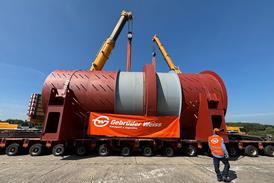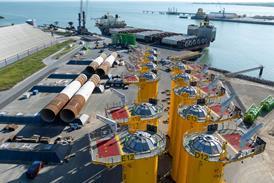Swiss-based crane service provider Toggenburger has set a new 230-tonne bridge in place in Niederuster, near Zurich, using a Tadano CC 38.650-1.

Toggenburger required 20 trucks to transport the CC 38.650-1 to the work site, with four assembly technicians and an AC 140 assist crane setting the CC up within two-and-a-half days with an LSL 2 configuration and a 66-m boom.
The crane had a full counterweight consisting of 165 tonnes of counterweight, 50 tonnes of central ballast, and 325 tonnes of superlift counterweight.
“Since space at the work site was extremely tight, the crane’s Vario-SL really came in handy, as it made it possible to manoeuvre the superlift counterweight over terrain that was about a metre higher,” said Toggenburger large-scale project manager, Manuel Widmer.
Lifting the demolished parts of the pre-existing bridge, weighing 150 tonnes, was completed without any issues. In order to position the ballast traverse for installation of the new bridge, Bongossi mats had to be fully extended to the closed-off road so that the crane could travel forward enough.
At the same time, an assist crane was used to prepare the slinging gear with strand jacks, which had already been adjusted to the correct length in advance based on calculations made by Toggenburger’s team.
Widmer added: “It was absolutely imperative for the load on the lines, which were up to 35 m long, not to exceed 55 or 75 tonnes, depending on the attachment point. So, in order not to go over the load limit at the attachment points on the load, we tightened the last 100 tonnes with the strand jacks.”
Then, the CC 38.650-1 lifted the bridge, swung it over the surrounding trees at a 31-m radius, and set it down on its supports. The hydraulic strand jacks, with their different line lengths at the ends of the loads able to be adjusted precisely during the lift, meant that the bridge’s slight downhill slope could be combated and set down at the exact angle needed, using a “tilted” position.
















